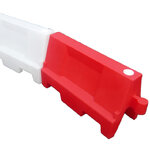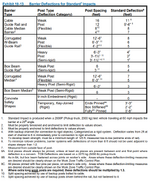Claudia_C
Civil/Environmental
- Sep 4, 2024
- 27
Good Morning All,
I am working on a project to place jersey barriers around our above ground pipeline sites to mitigate any risk of impact due to traffic. Most of our sites are located on the side of roads in easements.
I have been doing some research and it appears that to anchor a barrier you have to anchor it to asphalt or concrete.
Has anyone ever anchored a jersey barrier to soil? How was this done and is there any advantages to doing so?
Thank you
I am working on a project to place jersey barriers around our above ground pipeline sites to mitigate any risk of impact due to traffic. Most of our sites are located on the side of roads in easements.
I have been doing some research and it appears that to anchor a barrier you have to anchor it to asphalt or concrete.
Has anyone ever anchored a jersey barrier to soil? How was this done and is there any advantages to doing so?
Thank you




